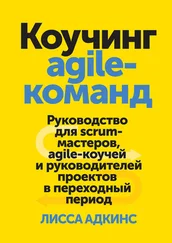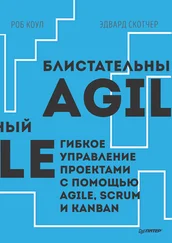Bills, Mark. 2004b. Useful Back-of-the-Envelope Calculations. Cutter IT E-Mail Advisor , October 27.
Boehm, Barry. 1981. Software Engineering Economics. Prentice Hall.
Boehm, Barry. 2002. Get Ready for Agile Methods, with Care. IEEE Computer , 35 (1): 64–69.
Boehm, Barry, and Richard E. Fairley. 2000. Software Estimation Perspectives. IEEE Software 17 (6): 22–26.
Bossi, Piergiuliano. 2003. Using Actual Time: Learning How to Estimate. In Extreme Programming and Agile Processes in Software Engineering: 4 th International Conference , edited by Michele Marchesi and Giancarlo Succi.
Bossi, Piergiuliano, and Francesco Cirillo. 2001. Repo Margining System: Applying XP in the Financial Industry. Proceedings of the 2nd International Conference on Extreme Programming and Flexible Processes in Software Engineering (XP2001).
Brenner, Lyle A., Derek J. Koehler, and Amos Tversky. 1996. On the Evaluation of One-sided Evidence. Journal of Behavioral Decision Making 9: 59–70.
Brooks, Fred. 1975. The Mythical Man Month: Essays on Software Engineering. Addison-Wesley.
Center for Quality of Management. Special Issue on Kano’s Methods for Understanding Customer-defined Quality. Center for Quality of Management Journal 2 (4).
Cirillo, Francesco. 2005. Tracking the Project with the Pomodoro. Unpublished article.
Clark, Kim B., and Steven C. Wheelwright. 1993. Managing New Product and Process Development: Text and Cases. The Free Press.
Cockburn, Alistair. 2002. Agile Software Development Joins the «Would-Be» Crowd. Cutter IT Journal 15 (1).
Cohn, Mike. 2004. User Stories Applied: For Agile Software Development. Addison-Wesley.
Constantine, Larry L., and Lucy A. D. Lockwood. 1999. Software for Use: A Practical Guide to the Models and Methods of Usage-Centered Design. Addison-Wesley.
DeGrace, Peter, and Leslie Stahl. 1990. Wicked Problems, Righteous Solutions: A Catalog of Modern Engineering Paradigms. Prentice Hall.
DeLuca, Jeff. 2002. FDD Implementations . www.nebulon.com/articles/fdd/fddimplementations.html.
DeMarco, Tom, and Timothy Lister. 2003. Waltzing with Bears: Managing Risk on Software Projects. Artech House.
Duggan, Jim, Jason Byrne, and Gerald J. Lyons. 2004. A Task Allocation Optimizer for Software Construction. IEEE Software 21 (3): 76–82.
Ganssle, Jack. 2004. The Middle Way. Embedded Systems Programming , October 14.
van Genuchten, Michiel. 1991. Why Is Software Late? An Empirical Study of Reasons for Delay in Software Development. IEEE Transactions on Software Engineering 17 (6): 582–590.
Gilb, Tom. 1988. Principles of Software Engineering Management. Addison-Wesley.
Githens, Greg. 1998. Rolling Wave Project Planning. Proceedings of the 29 th Annual Project Management Institute 1998 Seminars and Symposium.
Goldratt, Eliyahu M. 1990. What Is This Thing Called Theory of Constraints and How Should It Be Implemented? North River Press.
Goldratt, Eliyahu M. 1992. The Goal: A Process of Ongoing Improvement, 2nd rev. ed. NorthRiver Press.
Goldratt, Eliyahu M. 1997. Critical Chain. North River Press.
Goldratt, Eliyahu M. 2000. Necessary But Not Sufficient. North River Press.
Grenning, James. 2002. Planning Poker, www.objectmentor.com/resources/articles/PlanningPoker.zip.
Griffin, Abbie, and John R. Hauser. 1993. The Voice of the Customer. Marketing Science 12 (1): 1–27.
Hagafors, R., and B. Brehmer. 1983. Does Having to Justify One’s Decisions Change the Nature of the Decision Process? Organizational Behavior and Human Performance 31: 223–232.
Highsmith, Jim. 2004a. Agile Project Management: Creating Innovative Products. Addison Wesley.
Highsmith, Jim. 2004b. Email to agilemanagement@yahoogroups.com on February 16, 2004.
Hobbs, Charles. 1987. Time Power. Harper & Row Publishers.
Hoest, Martin, and Claes Wohlin. 1998. An Experimental Study of Individual Subjective Effort Estimations and Combinations of the Estimates. Proceedings of the 20th International Conference on Software Engineering , pp. 332–339.
Hunt, Andrew, and David Thomas. 1999. The Pragmatic Programmer: From Journeyman to Master . Addison-Wesley.
Jeffries, Ron. 2004. Email to extremeprogramming@yahoogroups.com on July 1, 2004.
Jeffries, Ron, Ann Anderson, and Chet Hendrickson. 2001. Extreme Programming Installed. Addison-Wesley.
Johnson, Jim. 2002. Keynote speech at Third International Conference on Extreme Programming.
Johnson, Philip M., Carleton A. Moore, Joseph A. Dane, and Robert S. Brewer. 2000. Empirically Guided Software Effort Estimation. IEEE Software 17 (6): 51–56.
Jørgensen, Magne. 2004. A Review of Studies on Expert Estimation of Software Development Effort. Journal of Systems and Software 70 (1–2): 37–60.
Jørgensen, Magne, and Kjetil Moløkken. 2002. Combination of Software Development Effort Prediction Intervals: Why, When and How? Fourteenth IEEE Conference on Software Engineering and Knowledge Engineering.
Keen, Jack M., and Bonnie Digrius. 2003. Making Technology Investments Profitable: ROI Roadmap to Better Business Cases. John Wiley & Sons.
Kennedy, Michael N. 2003. Product Development for the Lean Enterprise: Why Toyota’s System Is Four Times More Productive and How You Can Implement It. The Oaklea Press.
Kernighan, Brian, and P. J. Plauger. 1974. The Elements of Programming Style. McGraw-Hill.
Larson, Carl E., and Frank M. J. LaFasto. 1989. Teamwork: What Must Go Right / What Can Go Wrong. SAGE Publications.
Laufer, Alexander. 1996. Simultaneous Management: Managing Projects in a Dynamic Environment. American Management Association.
Leach, Lawrence P. 2000. Critical Chain Project Management. Artech House.
Lederer, Albert L., and Jayesh Prasad. 1992. Nine Management Guidelines for Better Cost Estimating. Communications of the ACM 35 (2): 51–59.
Lederer, Albert L., and Jayesh Prasad. 1998. A Causal Model for Software Cost Estimating Error. IEEE Transactions on Software Engineering 24(2):137–148.
McClelland, Bill. 2004. Buffer Management. The TOC Times , February.
McConnell, Steve. 1998. Software Project Survival Guide. Microsoft Press.
Macomber, Hal. 2004. Achieving Change in Construction Is a Matter of Mental Models. Reforming Project Management 3 (35): August 29.
Malotaux, Niels. 2004. Evolutionary Project Management Methods. www.malotaux.nl/nrm/pdf/MxEvo.pdf.
Martin, Robert C. 2004. PERT: Precursor to Agility. Software Development , February.
Miranda, Eduardo. 2001. Improving Subjective Estimates Using Paired Comparisons. IEEE Software 18 (1): 87–91.
Mugridge, Rick, and Ward Cunningham. 2005. FIT for Developing Software: Framework for Integrated Tests. Prentice Hall.
Nejmeh, Brian A., and Ian Thomas. 2002. Business-Driven Product Planning Using Feature Vectors and Increments. IEEE Software 34 (6): 34–42.
Newbold, Robert C. 1998. Project Management in the Fast Lane: Applying the Theory of Constraints. St. Lucie Press.
Parkinson, Cyril Northcote. 1958. Parkinson’s Law: The Pursuit of Progress . John Murray.
Poppendieck, Mary and Tom. 2003. Lean Software Development: An Agile Toolkit. Addison-Wesley.
Poppendieck, Mary. 2003. Lean Development and the Predictability Paradox. Agile Software Development and Project Management Executive Report 4 (8). Cutter Consortium.
Читать дальше
Конец ознакомительного отрывка
Купить книгу










